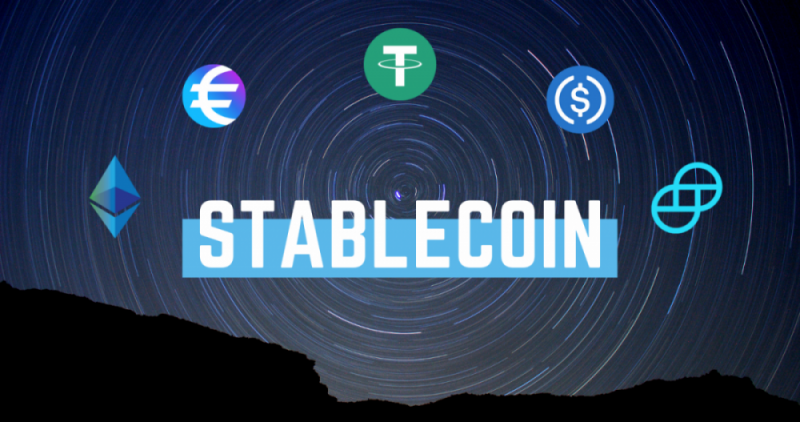Stablecoins Set to Reshape Global Finance as Adoption Grows in Emerging Markets
24.03.2025 8:00 2 min. read Alexander Stefanov
Tariffs imposed by the U.S. and subsequent retaliatory measures have created a market environment full of uncertainty, yet many experts view these actions as a negotiation tactic, believing the impact on businesses and consumers will be manageable in the long run.
This backdrop, combined with persistent inflation pressures, is challenging the Federal Reserve’s efforts to lower interest rates, as inflation remains far above the 2% target. Additionally, tensions surrounding the federal budget and a looming debt ceiling debate are causing further unease in financial markets.
While the Treasury Department continues to rely on temporary measures to meet financial obligations, the risk of these measures running out by the end of the first quarter looms large. The possibility of eliminating the debt ceiling has been floated, but it faces opposition from fiscal conservatives, further complicating the situation. Despite these ongoing challenges, one area showing resilience is the stablecoin market, which has surged as part of a broader shift in digital finance.
Dollar-pegged stablecoins are leading this charge, with USDT and USDC making up the bulk of the market, now valued at over $226 billion. The rise of stablecoins, once considered an experimental facet of the crypto world, is now a crucial element in global financial systems, particularly in emerging markets where these assets are offering stability amid economic volatility. In fact, countries grappling with inflation and currency devaluation, like Argentina, have seen widespread adoption of stablecoins as a hedge against local financial instability.
The increasing use of stablecoins is also seen in cross-border transactions, simplifying global money transfers while mitigating exchange rate risks. A growing number of countries, such as Brazil, Nigeria, and India, are adopting stablecoins in place of traditional currencies, as they offer an alternative to unreliable local financial systems. In Argentina, for instance, stablecoins make up nearly 60% of all transactions, with both USDT and USDC in high demand.
Looking ahead, the stablecoin market is expected to continue its rapid expansion, potentially reaching a valuation of $400 billion by 2025, with projections for it to surpass $3 trillion within the next five years. Traditional financial institutions are increasingly recognizing the potential of stablecoins, with major players like Stripe and BBVA making moves to integrate them into their offerings. The Federal Reserve has acknowledged the potential benefits of stablecoins, noting they could reduce reliance on intermediaries and lower transaction costs. As adoption grows, stablecoins are positioning themselves as a key component of the future global financial landscape.
-
1
Trump-Linked Crypto Project WLFI Prepares for Token Listing and Stablecoin Audit
27.06.2025 11:00 2 min. read -
2
TRON (TRX) Eyes Breakout as Bollinger Bands Signal Squeeze
30.06.2025 13:00 2 min. read -
3
Altcoin Market: In Which Stage are we Now, According to Top Crypto Expert
06.07.2025 18:00 2 min. read -
4
Nasdaq-Listed Firm Targets HYPE, Solana, and Sui for Reserve Strategy
27.06.2025 19:00 2 min. read -
5
BNB Chain Boosts Transaction Speed and Stability with New Upgrade
30.06.2025 8:00 1 min. read
Grayscale Confidentially Files for New SEC-registered Offering Amid Growing Crypto Market demand
Grayscale Investments announced today that it has confidentially submitted a draft registration statement on Form S-1 to the U.S.
These Blockchains are Quietly Heating up—Sonic Leads With 89% Address Growth
According to on-chain analytics firm Nansen, several blockchain networks are witnessing a sharp rise in user activity, led by Sonic, which recorded an impressive 89% growth in active addresses over the past 7 days.
Here is How to Read the Crypto Fear and Greed Index
In the volatile world of cryptocurrency, investor psychology is one of the most powerful forces behind price movement.
These Are the Most Trending Altcoins Right Now, According to CoinGecko
Crypto analysis platform CoinGecko has revealed the most talked-about altcoins in recent hours, highlighting a surge in investor interest across a range of sectors—from meme coins to DeFi and gaming tokens.
-
1
Trump-Linked Crypto Project WLFI Prepares for Token Listing and Stablecoin Audit
27.06.2025 11:00 2 min. read -
2
TRON (TRX) Eyes Breakout as Bollinger Bands Signal Squeeze
30.06.2025 13:00 2 min. read -
3
Altcoin Market: In Which Stage are we Now, According to Top Crypto Expert
06.07.2025 18:00 2 min. read -
4
Nasdaq-Listed Firm Targets HYPE, Solana, and Sui for Reserve Strategy
27.06.2025 19:00 2 min. read -
5
BNB Chain Boosts Transaction Speed and Stability with New Upgrade
30.06.2025 8:00 1 min. read

